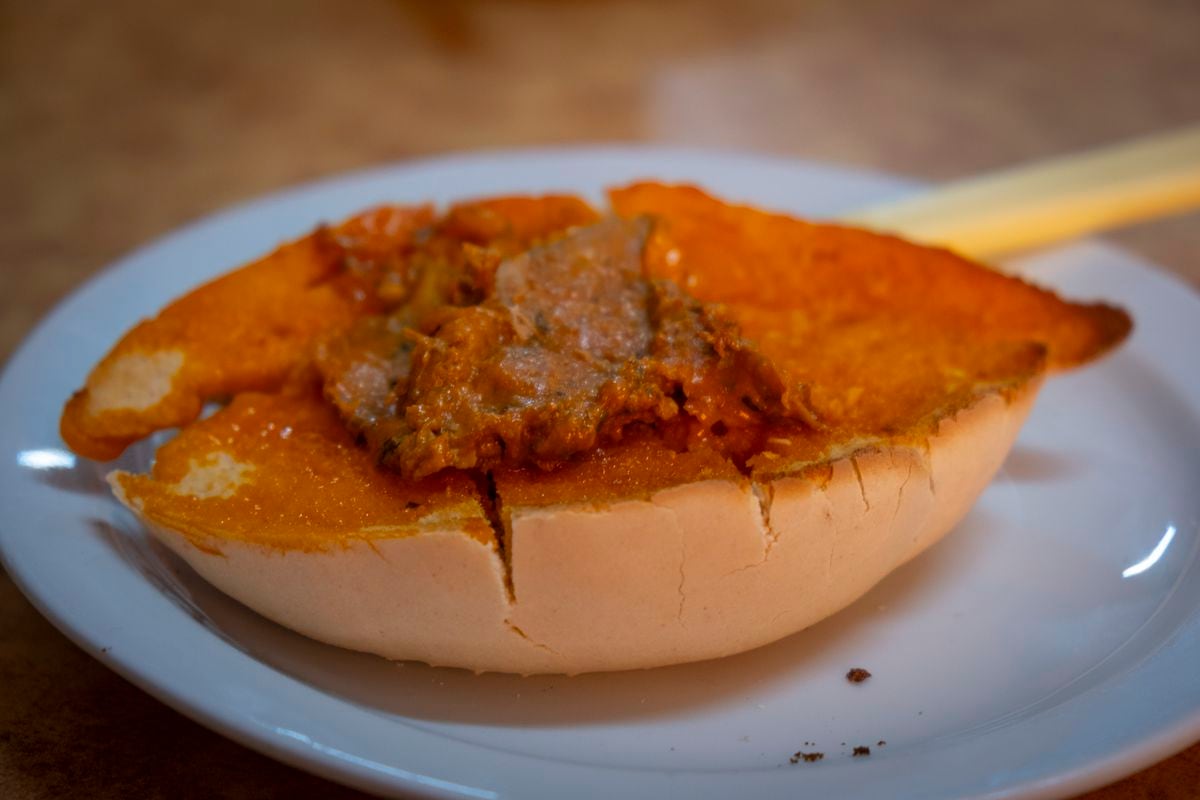Butter, in Spain, is everywhere. A total of 2,721 Spaniards have the last name Manteca. One of the most famous bars in the country is called Casa Manteca (Cádiz). There is even the expression “getting on someone's nerves” as a synonym for gaining excess weight. But we also have the habit of storing food in butter: cheeses, sausages, loin, liver and anchovies are likely to end up in a jar or centerboard full of pork fat, butter or oil.
Antonio Peláez Garrido, manager of Carnicerías Peláez (Málaga), explains that, at the base of these preparations, there is a very specific objective: to preserve. "When there was no refrigerator, keeping meats and sausages in the fat of the same pig from which they came was a way to prevent them from spoiling and to ensure that they lasted for months."
In their company they make several of these products: white and red loin zurrapa (to which paprika is added); white and red chicharrón, “but not like the one from Cádiz, but chopped and fried,” Peláez clarifies; spanking of offal, that is, of liver; loin in white and red butter; and chorizo. “All meats are salted for a while and fried to remove much of the moisture that could spoil them, and this is done in the butter that, later, when solidified, will preserve them.”
More information
Manteca colorá and its relatives: Iberian grease for a strong breakfast
The butcher explains that these preparations have always been typical of the countryside, where they were consumed when the bag was loaded, that is, at midday meal. “The habit of consuming them has been lost. Before, chorizo and blood sausage were products that were not lacking in the pantry of every home, but today they have come to be eaten occasionally, at the weekend barbecue or in the restaurant.” Despite everything, his business, founded 36 years ago, has increased sales: “we have expanded the market and today the restaurant industry is our main client.”
As for the queen of southern breakfasts, the zurrapa, the company El Cerdito Andaluz (Málaga) explains that its origin lies in exploitation. “Its preparation arose from a way of taking advantage of the melting of fresh pellets to make butter with the remains of meat that had been left over when making sausages. Butter was originally used to preserve products, although later ingredients were added, giving rise to zurrapas, which are used to spread on toast.”
In his case, the best known and sold is the zurrapa de lomo, with this seasoned with natural spices, fried and crushed together with the butter. They affirm that the consumption of zurrapas and other lard products that they make, such as loin, chorizo, liver or chicharrones, are typical consumption in Andalusia and by an elderly public, "although in recent years it has been expanding sales throughout the rest of Spain.”
In a similar way, but made from pork liver, the Extremaduran caldillo triumphs in breakfasts in the province of Badajoz. Alba Rodríguez, from the Marabé Sausages and Ham Factory, explains that the liver is chopped, mixed with butter, salted and seasoned with spices such as paprika (“without allergens such as lactose or gluten”, she clarifies), Fry and mix homogeneously. Here they inherited the recipe from their grandfather, who worked as a butcher since he was 15, and they know well the best way to enjoy it: “spread on bread, a little melted and hot.” Rodríguez explains that caldillo is a way to use pork liver, which is perishable and has few recipes that include it. Although other products they make, such as black pudding, are consumed less and less at home, the same has not happened with caldillo: “sales have not decreased.”
The fish is also not immune to a good fat bath. This is the case of anchovies in butter and, although today they seem like a rare product, they are the first formulation of ready-to-eat anchovies. The idea was from the Sicilian cannery Giovanni Vella Scaliota, who arrived at the end of the 19th century to Santoña attracted by the Cantabrian fishing grounds. “At that time, the anchovies came out of the cannery whole and in their brine, and it was the customer who had to clean them of their spines and fins,” explains Doña Tomasa, a cannery from Santoña. “But Vella Scaliota thought of offering them clean and preserving them in butter.”
In Castilla y León, the so-called “burial of the slaughter” is practiced, where lard is the medium where sausages and meats are submerged until they see the light of day again. From El Bar (Valladolid), Roberto Fuertes explains that, above all, sausages such as chorizo and loin are usually buried. “But we have done our experiments with secret, mask and even tuna loin in butter. It is the basis of cooking and canning techniques in Castilla. The Bar is supplied every year with a slaughterhouse and we have kept natural, unsmoked butter for five years, to let it go rancid and make spreads with which to cook.”
You can follow EL PAÍS Gastro
on
and
X.

